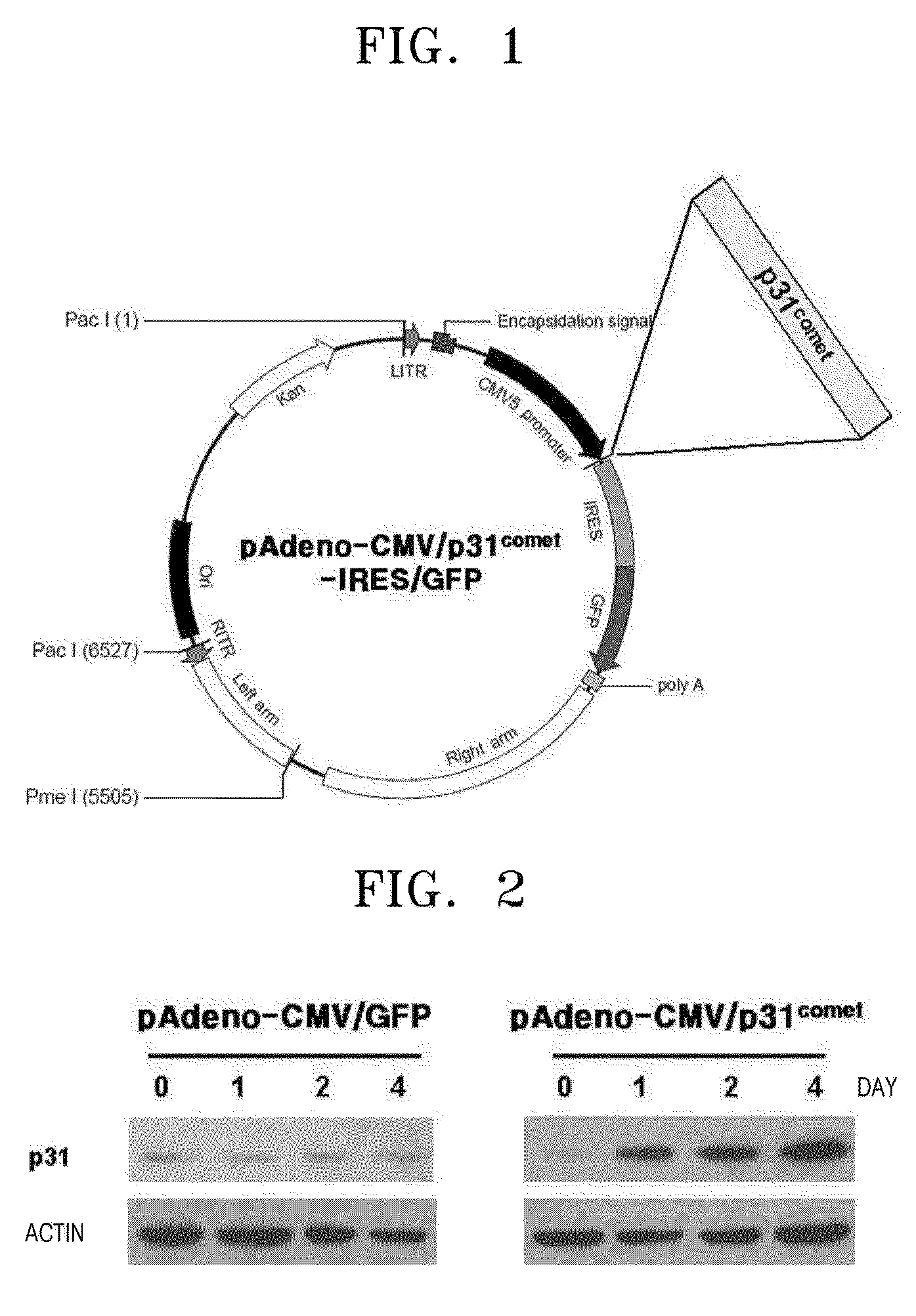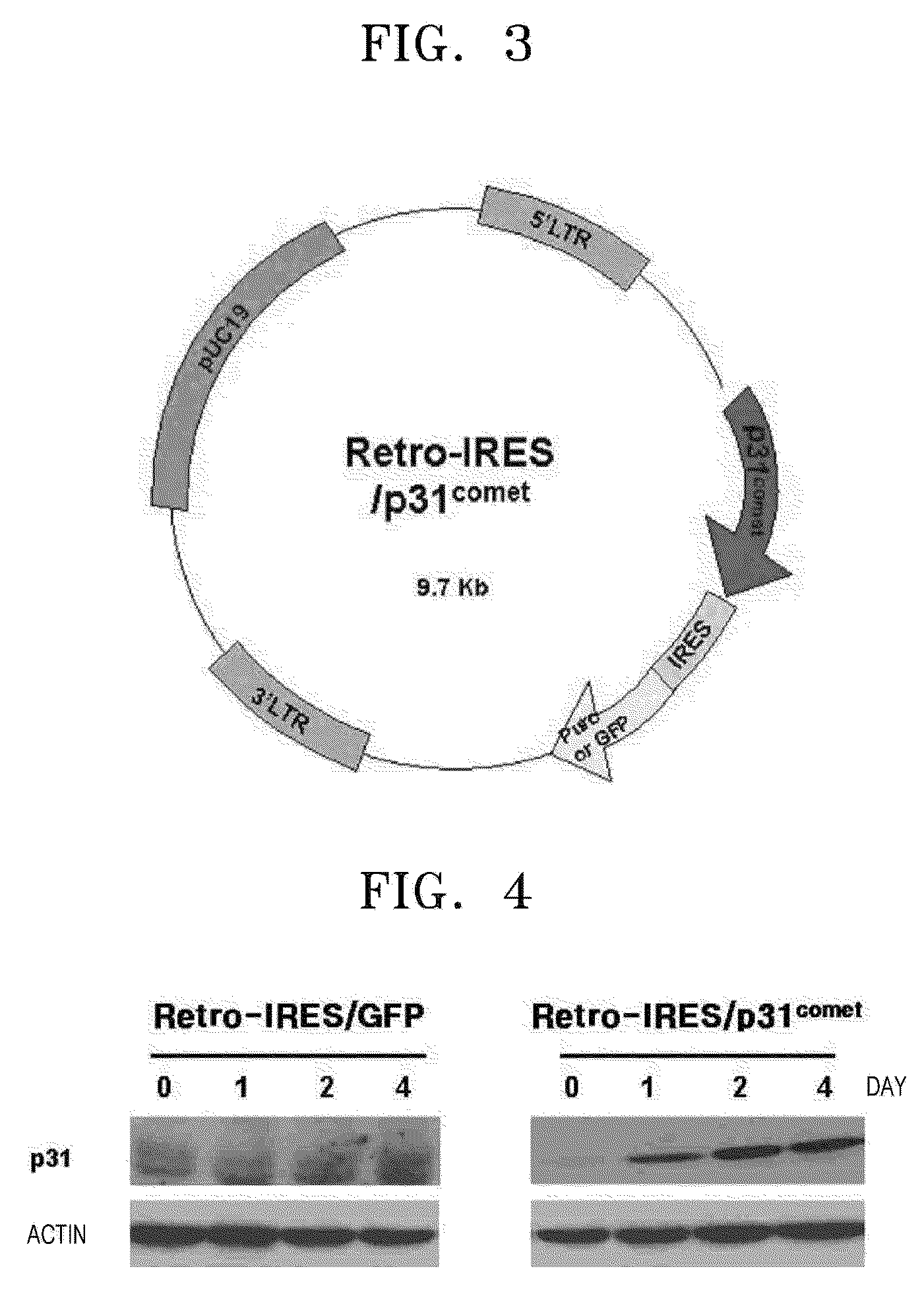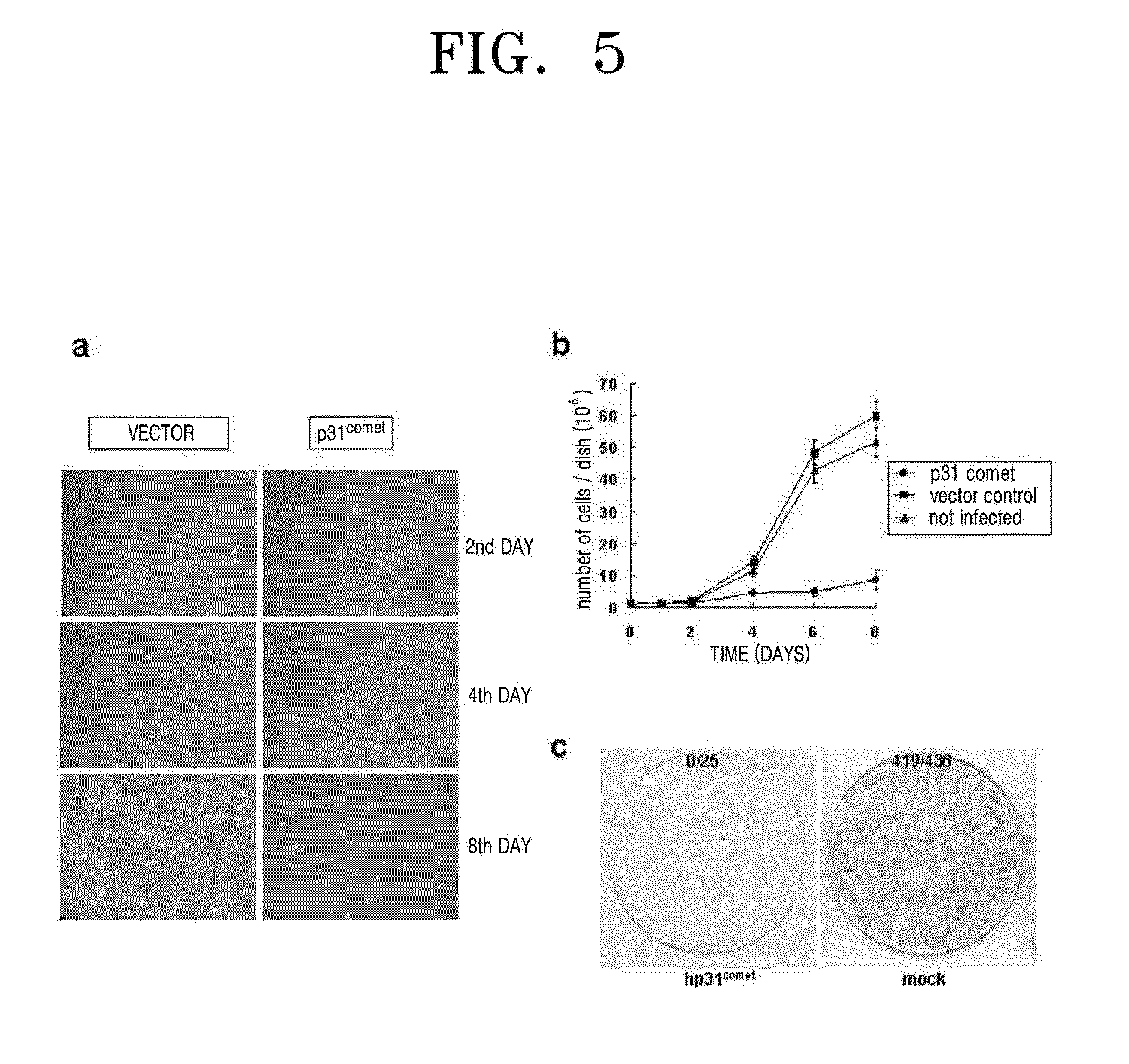PHARMACEUTICAL COMPOSITION FOR TREATING MALIGNANT TUMORS CONTAINING HUMAN p31 GENES
a technology of p31 and p31comet, which is applied in the field of pharmaceutical composition for the treatment of malignant tumors, can solve the problems of inability to accurately classify tumors, ineffective use of conventional anti-cancer agents, and inability to effectively use gene therapy, etc., to achieve the effect of suppressing cancer cell growth, promoting apoptosis, and promoting apoptosis
- Summary
- Abstract
- Description
- Claims
- Application Information
AI Technical Summary
Benefits of technology
Problems solved by technology
Method used
Image
Examples
example 1
Preparing Adenovirus Vector Expressing p31comet-1 and 2
[0078]Normal human p31comet cDNA was obtained from the human thymus library of Clontech through a PCR using a forward primer (SEQ ID NO: 5) and a reverse primer (SEQ ID NO: 6) to isolate the p31comet gene. The PCR was performed using a 50 μl mixture containing 0.1 μg of the library, each 10 μmol of the forward and reverse primers, 10 units of Tag polymerase (Takara), a 1× buffer solution, 2.5 mM dNTPs and water. The template DNA was denatured at 95° C. for 5 minutes, cycled 30 times (95° C. for 45 seconds, 56° C. for 45 seconds, and 72° C. for 1 minute) for the amplification of p31comet cDNA, and then further amplification was performed at 72° C. for 10 minutes. The amplified p31comet cDNA was separated using a column. The cDNA of p31comet and the vector were cleaved with Bal II restriction enzyme and the cDNA was separated to insert into the multiple cloning site of a pAdenoVator-CMV5-IRES-GFP vector. The separated cDNA corresp...
example 2
Preparing Retrovirus Vector Expressing p31comet-1 and 2
[0080]Retrovirus vectors including the p31comet gene were prepared in a similar manner to the adenovirus vectors in Example 1. FIG. 3 is a cleavage map illustrating the Retro-IRES / p31comet vector. The inventors of the present invention produced the virus including the gene that is non-proliferous variant virus using an H29D packaging cell. To identify the expression of the p31comet protein, the retrovirus was infected into a HeLa cell and the expression over time was identified. FIG. 4 illustrates the expressed amount of the Retro-IRES / p31comet vector measured by Western blotting over time. In FIG. 4, the left panel illustrates a negative control in which the p31comet gene is not inserted, and actin is a positive control showing that the amount of protein separated from the negative control is almost the same as the amount of the protein of the present invention. As illustrated in FIG. 4, it is identified that the retrovirus vec...
example 3
Effect of p31comet on the Growth Suppression of Cancer Cells
[0081]In order to identify the effect of p31comet on cancer cells, 20 types of cancer cell lines were used in total. In detail, 5 of uterine cervix cancer cell lines (HeLa, SW756, SiHa, MS751 and Caski); 5 kinds of lung cancer cell lines (A549, Calu-1, Sk-Lu-1, H460 and H446); 5 of liver cancer cell lines (Sk-Hep-1, Chang, HepG2, Huh-7 and Hep3B); 2 of bone cancer cell lines (SaOs-2 and U-2OS); 2 of breast cancer cell lines (MCF-7 and T47D); and 1 of kidney cancer cell line (293) were used.
[0082]Among the 20 of human cancer cell lines, HeLa, SW756, SiHa, MS751, Sk-Lu-1, Sk-Hep-1, HepG2, Hep3B, MCF-7, T47D and 293 were cultivated in wet conditions including 10% FBS (JRH Biosciences Inc. Kansas, USA), and MEM (WeIGENE Inc. Daegu, South Korea) including streptomycin and penicillin G at 37° C. with 5% CO2. The Caski, A549, H460, H446 and Huh-7 cell lines were cultivated in wet conditions including 10% FBS (JRH Biosciences Inc. ...
PUM
| Property | Measurement | Unit |
|---|---|---|
| fluorescence | aaaaa | aaaaa |
| fluorescent | aaaaa | aaaaa |
| sequence length | aaaaa | aaaaa |
Abstract
Description
Claims
Application Information
 Login to view more
Login to view more - R&D Engineer
- R&D Manager
- IP Professional
- Industry Leading Data Capabilities
- Powerful AI technology
- Patent DNA Extraction
Browse by: Latest US Patents, China's latest patents, Technical Efficacy Thesaurus, Application Domain, Technology Topic.
© 2024 PatSnap. All rights reserved.Legal|Privacy policy|Modern Slavery Act Transparency Statement|Sitemap



